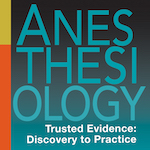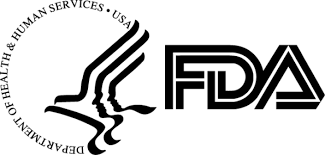Breaking down the anesthesia workforce imbalance, strategies to address crisis

Editor's Note Increased demand for anesthesia services, especially in non-operating room (non-OR) sites, has outpaced the growth of anesthesia clinicians, a June 2024 special article published by the journal Anesthesiology reports. The imbalance in the anesthesia workforce supply and demand, the article argues, was exacerbated by the COVID-19 pandemic and…
Study finds no link between anesthesia dose, postop delirium

Editor's Note Higher doses of anesthesia did not affect risk of postoperative delirium in a study of more than 1,000 heart surgery patients, according to a June 10 United Press International (UPI) article on study findings published in JAMA. The research included 1,140 heart surgery patients, half of whom had…
State of the huddle: The barriers to and benefits of preop meetings

Complex problems do not always require complex solutions. Consider the surgical safety checklist. In 2020, more than a decade after the World Health Organization (WHO) started advocating that every hospital use the checklist, research from PSNET found that more than 90% of ORs in countries with a high human development…
Ketamine, other anesthetics show promise for depression, mental health treatment

Editor's Note The advance of ketamine and other anesthetics as depression treatments is spurring collaboration among anesthesiologists and psychiatrists for further advances in mental health treatment, according to an article in the June issue of Anesthesiology, the peer-reviewed journal of the American Society of Anesthesiologists. As the established experts in…
FDA announces Class 1 recalls for patient return electrodes, intra-aortic balloon catheters, anesthesia systems

Editor's Note The US Food & Drug Administration (FDA) has announced Class 1 recalls—the most severe category, indicating risk of serious injury or death—for three products: MEGA SOFT Pediatric Patient Return Electrodes from Megadyne, Vaporizer Sevoflurane Maquet Filling from Getinge; and Arrow FiberOptix Intra-Aortic Balloon Catheter Kit and Arrow UltraFlex…
Study: standard preoperative fasting guidelines safe for GLP-1 patients

Editor's Note Preoperative use of GLP-1 receptor agonists (RA) medications such as Ozempic and Wegovy is safe, according to a study published in the June issue of the American Journal of Gastroenterology. Controversy has swirled around these drugs due to the risk of slowed stomach emptying increasing a patient’s odds…
Carbon-conscious health systems phase out desflurane anesthesia gas to reduce emissions

Editor's Note Citing environmental concerns, multiple health systems have stopped using desflurane anesthesia gas, Becker’s Hospital Review reported on May 7. Citing the Philadelphia Inquirer, the outlet notes that Children's Hospital of Philadelphia and Marlton, N.J.-based Virtua Health are among those that have eliminated the gas so far, with the…
Study: Surgical team diversity improves patient outcomes

Editor's Note The more diverse the surgical team, the better the outcomes for patients and the lower the cost of care, according to a study of more than 700,000 operations at 88 hospitals in Ontario, Canada. Published May 15 in the British Journal of Surgery, findings show that surgeon-anesthetist teams…
Data cast doubt on recommendation to delay weight-loss meds prior to surgery

Editor's Note A recent analysis of insurance claims data suggests weight-loss medications like Ozempic (semaglutide), Trulicity (dulaglutide), and other glucagon-like peptide-1 (GLP-1) receptor agonists do not increase risks associated with undergoing anesthesia. As reported April 22 in MedPage Today, these finding that contradicts a June 2023 recommendation from the American Society of…
FDA announces class 1 recalls for infusion pumps, anesthesia workstation

Editor's Note Reports of spontaneous backup battery failure in Dreager Inc.’s Perseus A500 anesthesia workstation and multiple failures in InfuTronix, LLC’s Nimbus infusion pump systems prompted the FDA to classify manufacturer recalls as class 1, the most serious categorization indicating risk of serious harm or death. According to an April…

 Free Daily News
Free Daily News